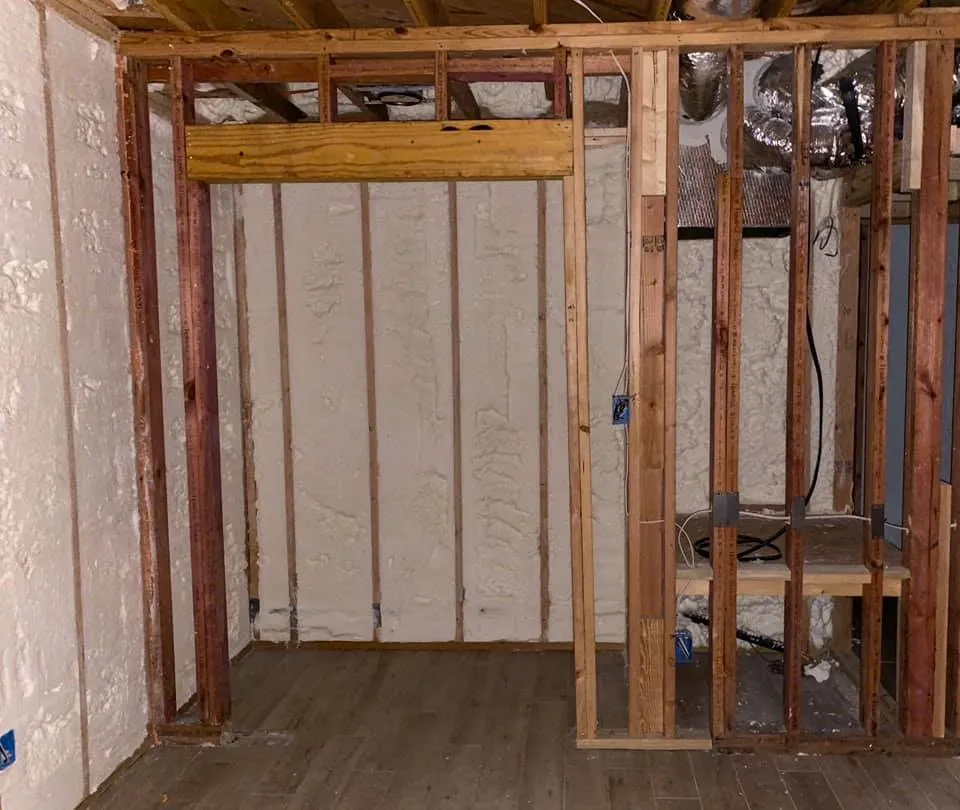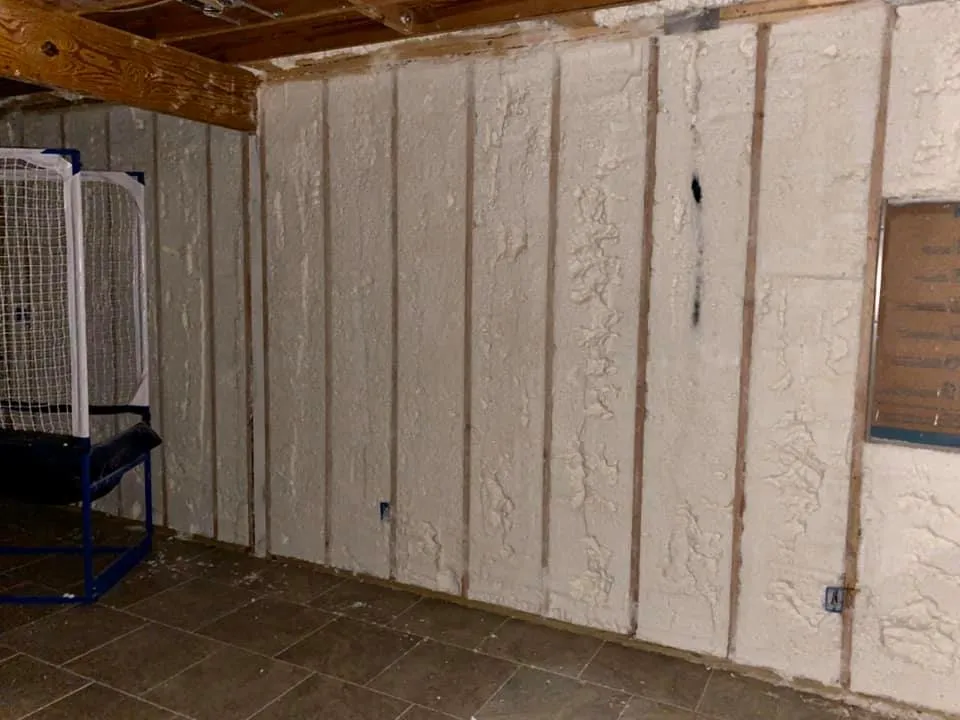Turning an above-garage room into a functional living space can be a great way to expand your home without the need for costly renovations. However, one crucial aspect that often gets overlooked is insulation. Proper insulation is essential to ensure comfort, energy efficiency, and protection against temperature extremes. In this post, we will guide you through the process of insulating an above-garage room effectively with spray foam insulation Austin or any other insulation type.
But first, what is an above-garage room?
Above-Garage Room
An above-garage room, also known as a bonus room or a room over the garage, is a living space that is constructed directly above a garage. This type of room is typically found in two-story homes where the garage is attached to the main living area. The above-garage room is situated on the second floor and can serve various purposes, such as an extra bedroom, home office, playroom, gym, or entertainment space.
Above-garage rooms are popular choices for homeowners looking to maximize their living space without expanding their home’s footprint. By utilizing the area above the garage, which would otherwise be unused attic space, homeowners can create additional functional rooms and increase the overall square footage of their property.
While above-garage rooms offer many advantages, they also come with unique considerations. Due to their location directly above the garage, these rooms can be more susceptible to temperature fluctuations. The garage beneath the room can be a source of cold air during winters and hot air during summers, making insulation and proper ventilation crucial for maintaining a comfortable indoor environment.
To make an above-garage room comfortable and functional, homeowners should focus on effective insulation, air sealing, and adequate ventilation. Proper insulation will help regulate the temperature and prevent heat loss or gain through the walls and ceiling. Air sealing is essential to eliminate drafts and air leaks, as they can impact the room’s energy efficiency and comfort. Adequate ventilation ensures that the room remains well-ventilated, preventing the buildup of excess heat and moisture.
When designing an above-garage room, it is also essential to consider the purpose of the space and the intended use. If it will be used as a bedroom or a space for extended periods, soundproofing measures may be necessary to minimize noise from the garage or the rest of the house.
How to Insulate Your Above-Garage Room
To effectively insulate your above-garage room, we recommend that you follow the guide below;
Assessing the Existing Conditions
Before diving into the insulation process, it is essential to assess the current state of your above-garage room. Check for any existing insulation, identify air leaks, and determine the type of construction used for the walls and roof. This initial evaluation will help you plan the insulation strategy more efficiently.
Choosing the Right Insulation Material
Selecting the right insulation material is crucial to achieve the desired results. There are several options available, including fiberglass batts, spray foam, blown-in cellulose, and rigid foam boards. Each material has its pros and cons, so consider factors like R-value, cost, and ease of installation to make an informed decision.
Insulating the Walls
Insulating the walls of the above-garage room is essential to maintain a comfortable indoor temperature. For walls without existing insulation, fiberglass batts or spray foam can be excellent options. Measure the wall cavities accurately and cut the insulation material accordingly. Place the insulation between the studs, ensuring a snug fit to prevent air leakage.
Air Sealing
To maximize the efficiency of insulation, air sealing is a critical step. Use caulking or weatherstripping to seal any gaps or cracks in the walls, around windows, and doors. Pay special attention to the areas where different building materials meet, as these are common spots for air leaks.
Insulating the Ceiling
The ceiling is a significant source of heat loss or gain, depending on the season. Insulate the ceiling with fiberglass batts or blown-in insulation, ensuring even coverage throughout the attic space. Take care to insulate around any ceiling fixtures or recessed lighting to avoid fire hazards.
Addressing the Garage Door
The garage door can be a major source of heat transfer. Consider upgrading to an insulated garage door or installing an insulation kit to minimize temperature fluctuations. Weatherstripping around the garage door’s perimeter will also help to seal out drafts and maintain a consistent temperature inside the above-garage room.
Insulating the Floor
If the garage floor is not insulated, consider adding insulation to further enhance the room’s comfort. Rigid foam insulation boards or foam spray insulation can be applied to the underside of the floor. This will help prevent cold air from seeping in through the garage floor, especially during colder months.If the garage floor is not insulated, consider adding insulation to further enhance the room’s comfort. Rigid foam insulation boards or foam spray insulation can be applied to the underside of the floor. This will help prevent cold air from seeping in through the garage floor, especially during colder months.
Ventilation and Moisture Control
Proper ventilation is essential in any living space, including above-garage rooms. Install roof vents or a ridge vent to allow hot air to escape during summers, preventing heat buildup. Additionally, consider using a dehumidifier to control moisture levels and prevent mold growth.
Check Building Codes and Permits
Before starting the insulation project, ensure you check local building codes and regulations. Some areas may require specific insulation standards or permits for certain types of insulation work. Compliance with these codes not only ensures your safety but can also prevent potential issues when selling the property in the future.
Choosing the right insulation for an above-garage room is crucial to ensure optimal comfort, energy efficiency, and protection against temperature fluctuations. There are several factors to consider when making this decision. Here are some steps to help you choose the right insulation for your above-garage room:
Understand the Insulation Types
Familiarize yourself with the various insulation types available in the market so you can choose the right one for your above-garage room. The most common options for above-garage rooms include:
Fiberglass Batts: These are flexible, pre-cut panels made of glass fibers. They are easy to install between wall studs and ceiling joists.
Spray Foam: This liquid insulation expands and hardens into a solid foam on application, filling any gaps and crevices.
Blown-In Insulation: Typically made of cellulose or fiberglass, this insulation is blown into wall cavities and attics using special equipment.
Rigid Foam Boards: These boards provide excellent insulation and can be installed on walls, ceilings, and floors.
Insulating an above-garage room is a worthwhile investment that pays off in improved comfort and reduced energy bills. By following these step-by-step guidelines and using the right insulation materials, you can create a cozy living space that is well-protected from external temperature fluctuations. Remember to pay attention to air sealing and ventilation to maximize the benefits of insulation. Visit https://stellrr.com/ and let’s help you transform your above-garage room into a functional and comfortable living space for years to come.
Name, Address and Phone
Stellrr Insulation & Spray Foam, 401 Congress Ave, #1540 Austin TX 78701, 5125200044
Map Embed
3 Social account URLs
Stellrr Insulation & Spray Foam





